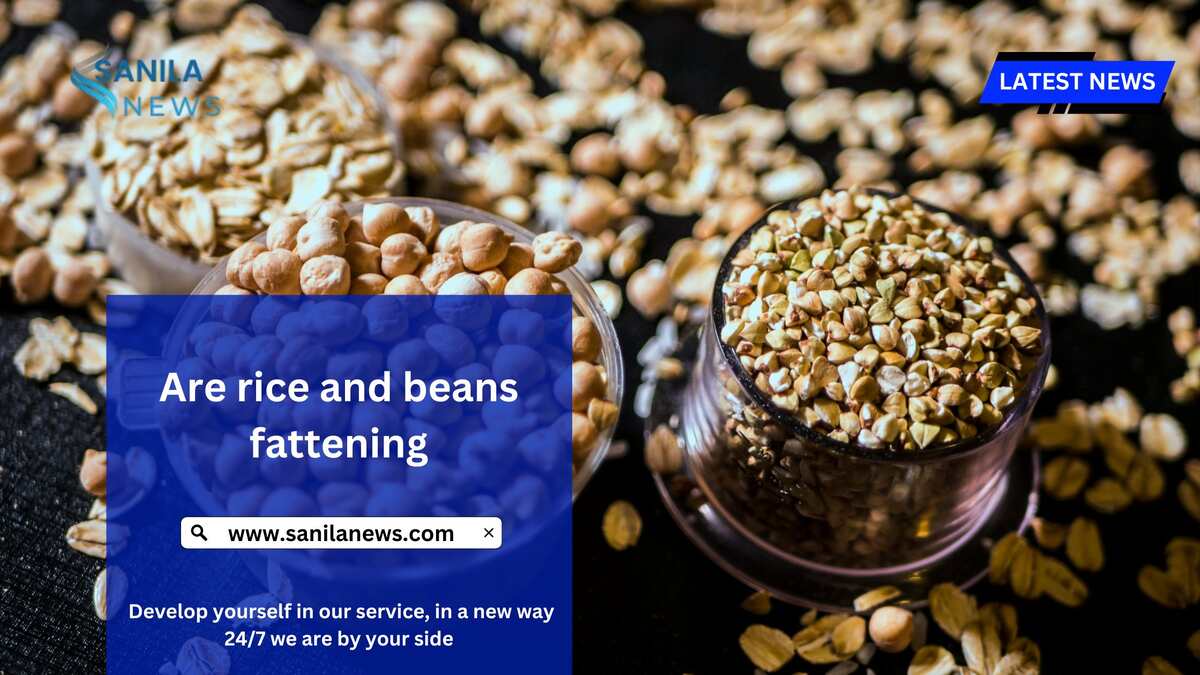Are Rice and Beans Fattening? A Comprehensive Analysis
Rice and beans are staples in many cultures around the world, celebrated for their versatility, affordability, and nutritional value. However, as with any food, questions often arise about their impact on health, particularly concerning weight management. This article explores whether rice and beans are fattening, examining their nutritional profiles, health benefits, and potential drawbacks, while providing guidance on how to incorporate them into a balanced diet.
Nutritional Profile of Rice and Beans
Rice:
Rice, a widely consumed grain, is primarily a source of carbohydrates. There are various types of rice, including white, brown, and wild rice, each with different nutritional profiles:
- White Rice: White rice is milled and polished, which removes the bran and germ. As a result, it has a high glycemic index (GI) and lower fiber content compared to brown rice. One cup of cooked white rice contains about 200 calories, 45 grams of carbohydrates, 4 grams of protein, and negligible fat.
- Brown Rice: Brown rice is less processed and retains its bran and germ, offering more fiber and nutrients. One cup of cooked brown rice provides approximately 215 calories, 45 grams of carbohydrates, 5 grams of protein, and 1.5 grams of fat. It also has a lower GI compared to white rice, which means it has a slower impact on blood sugar levels.
- Wild Rice: Wild rice is technically a grass, not a true rice, and has a different nutritional profile. One cup of cooked wild rice contains about 165 calories, 35 grams of carbohydrates, 6.5 grams of protein, and 0.5 grams of fat. It also offers more protein and fiber than both white and brown rice.
- Beans:
Beans are an excellent source of plant-based protein, fiber, and various micronutrients. Different types of beans include black beans, kidney beans, chickpeas, and lentils. Here’s a general breakdown:
- Black Beans: One cup of cooked black beans contains approximately 225 calories, 40 grams of carbohydrates, 15 grams of protein, and 0.9 grams of fat. They are also rich in fiber, which aids in digestion and helps maintain stable blood sugar levels.
- Kidney Beans: One cup of cooked kidney beans provides about 225 calories, 40 grams of carbohydrates, 13 grams of protein, and 0.9 grams of fat. They are also a good source of iron and potassium.
- Chickpeas (Garbanzo Beans): One cup of cooked chickpeas contains around 270 calories, 45 grams of carbohydrates, 15 grams of protein, and 4 grams of fat. Chickpeas are high in fiber and contain a range of vitamins and minerals, including folate and manganese.
Health Benefits of Rice and Beans
- Nutrient Density:
Are rice and beans fattening rice and beans are nutrient-dense foods. Beans, in particular, are rich in protein, fiber, vitamins, and minerals, which contribute to overall health. Fiber promotes digestive health, helps control blood sugar levels, and supports heart health. Brown rice and wild rice also provide essential nutrients and fiber, making them a better choice than white rice for those looking to optimize their diet.
- Satiety:
The combination of rice and beans offers a balance of protein and carbohydrates, which can help increase feelings of fullness and reduce overall calorie intake. The fiber content in beans and brown rice slows digestion and helps maintain stable blood sugar levels, which can prevent overeating.
- Glycemic Index:
The glycemic index (GI) measures how quickly a food raises blood sugar levels. Low-GI foods, like brown rice and beans, have a slower effect on blood sugar compared to high-GI foods, like white rice. This slower digestion can help prevent insulin spikes and crashes, which are associated with increased hunger and weight gain.
- Heart Health:
are rice and beans fattening both rice and beans can contribute to heart health. Beans are a good source of potassium, which helps regulate blood pressure. Additionally, the fiber in beans can help lower cholesterol levels. Brown rice also contains antioxidants and nutrients that support cardiovascular health.
Potential Concerns
- Caloric Density:
A re rice and beans fattening rice and beans, when consumed in large quantities, can contribute to calorie intake. Although they are not inherently fattening, eating them in excess can lead to weight gain. Portion control is essential to managing calorie intake. A balanced diet includes a variety of foods and not just rice and beans alone.
- Carbohydrate Content:
Rice is primarily a carbohydrate source. For individuals on low-carbohydrate diets or those managing conditions like diabetes, portion size and choice of rice (brown or wild rice over white rice) are important considerations. Beans, while high in carbohydrates, are also high in fiber, which moderates their impact on blood sugar levels.
- Digestive Issues:
Are rice and beans fattening Beans are known to cause digestive issues for some people, such as bloating or gas. This is due to their high fiber content and certain carbohydrates (oligosaccharides) that are difficult for some individuals to digest. Proper preparation, such as soaking beans before cooking, can help reduce these effects.
Practical Tips for Including Rice and Beans in Your Diet
- Choose Whole Grains:
Are rice and beans fattening Opt for brown or wild rice over white rice to maximize fiber and nutrient intake. Whole grains are more filling and have a lower glycemic index, which is beneficial for weight management and overall health.
- Control Portions:
Be mindful of portion sizes. A standard serving of cooked rice or beans is about half a cup. Pairing rice and beans with a variety of vegetables and lean proteins can create a balanced meal that supports weight management.
- Combine with Vegetables:
Enhance the nutritional profile of your meals by adding vegetables to your rice and beans. This adds fiber, vitamins, and minerals, and helps increase the volume of your meals without significantly increasing calorie content.
- Use Healthy Cooking Methods:
Avoid adding excessive fats or sugars during cooking. Opt for methods like steaming, boiling, or baking instead of frying. When preparing beans, rinse them well and avoid adding large amounts of salt or high-fat ingredients.
- Stay Hydrated:
Drinking plenty of water throughout the day can aid digestion and help with the metabolism of carbohydrates. This is especially important when consuming high-fiber foods like beans.
Conclusion
Are rice and beans fattening rice and beans are not inherently fattening when included as part of a balanced diet. They offer significant nutritional benefits, including essential nutrients, protein, fiber, and a moderate caloric content. However, moderation and mindful consumption are key. The overall impact on weight depends on portion sizes, cooking methods, and the overall balance of your diet.
By making informed choices about the types of rice and beans you consume and incorporating them into a varied and balanced diet, you can enjoy their health benefits without negatively impacting your weight. Remember, it’s not just about individual foods but the overall dietary pattern and lifestyle choices that contribute to health and well-being.
Last word
Keep an eye on our news channel Sanila News to get updated news regularly.

